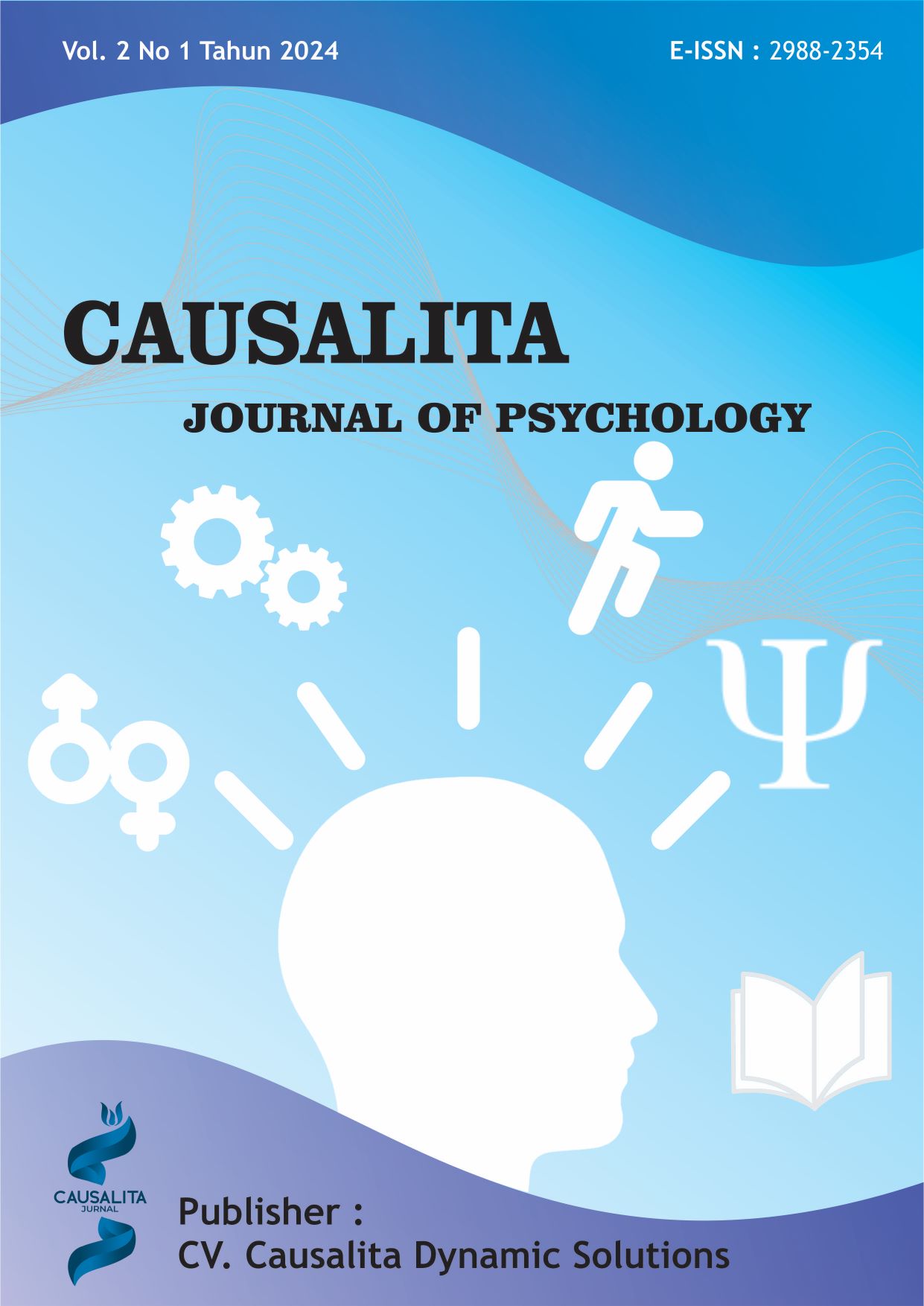Relationship Between Anxiety Level and Bruxism Habits in Andalas University Students
DOI:
https://doi.org/10.62260/causalita.v2i1.224Keywords:
Anxiety, Bruxism, StudentAbstract
Anxiety is a major risk factor for various physical and mental health problems. Students are more susceptible to anxiety than the general population. This often occurs simultaneously and can help each other, causing various complaints and affecting the body's physiology, one of which can cause bruxism habits. This study aims to determine the relationship between anxiety levels and bruxism habits in Andalas University students. The type of research used is observational analytic with a cross-sectional study approach. The statistical analysis used is the Chi-square test. The research sample was selected 94 people with a proportional stratified random sampling technique. Measurement of depression, anxiety, and stress levels was carried out using the Anxiety questionnaire, while bruxism assessment used a modified questionnaire by Daniel E. Paesani (Bruxism, Theory, and Practice) and Winocur E (Self-reported bruxism association with stress perception, motivation to control, dental anxiety and choking). This study shows that the prevalence of anxiety with varying degrees of severity among respondents is anxiety (68.1%). A total of 53 people (56.4%) of respondents have bruxism habits. The results of the Chi-square statistical test obtained a p value <0.05, which means that there is a relationship between the level of anxiety and the habit of bruxism in students of the Andalas University. There is a relationship between the level of anxiety and the habit of bruxism in students of the Faculty of Dentistry, Andalas University.
References
Agustiningsih, N. (2019). Gambaran Stres Akademik dan Strategi Koping Pada Mahasiswa Keperawatan. Jurnal Ners dan Kebidanan (Journal of Ners and Midwifery), 6(2), 241–250.
Ahad, A., Chahar, P., Haque, E., Bey, A., Jain, M., & Raja, W. (2021). Factors affecting the prevalence of stress, anxiety, and depression in undergraduate Indian dental students. J Educ Health Promot, 10(1), 266.
Ambarwati, P. D., Pinilih, S. S., & Astuti, R. T. (2017). Gambaran Tingkat Stres Mahasiswa. In Jurnal Keperawatan Jiwa (Vol. 5, Issue 1).
Astoeti, T. E., Josephine, H., Widyarman, A. S., & Sudhana, W. (2021). Correlation between dental environment and perceived stress scale among dental students during the COVID-19 pandemic in Indonesia. Kesmas, 16(3), 165–170.
Basudan, S., Binanzan, N., & Alhassan, A. (2017). Depression, anxiety and stres in dental students. Int J Med Educ, 8, 179–186
Cavallo, P., Carpinelli, L., & Savarese, G. (2016). Perceived stres and bruxism in university students. BMC Research Notes, 9(1), 1–6.
Chemelo, V. dos S., Né, Y. G. de S., Frazão, D. R., Souza-Rodrigues, R. D. de, Fagundes, N. C. F., Magno, M. B., Silva, C. M. T. da, Maia, L. C., & Lima, R. R. (2020). Is There Association Between Stres and Bruxism? A Systematic Review and Meta-Analysis. In Frontiers in Neurology (Vol. 11). Frontiers Media S.A.
Demjaha, G., Kapusevska, B., & Pejkovska-Shahpaska, B. (2019). Bruxism unconscious oral habit in everyday life. OAMJMS, 7(5), 876–881.
Ella, B., Ghorayeb, I., Burbaud, P., & Guehl, D. (2017). Bruxism in Movement Disorders: A Comprehensive Review. In J Prost (Vol. 26, Issue 7, pp. 599–605). Blackwell Publishing Inc
Garrett, A. R., & Hawley, J. S. (2018). SSRI-associated bruxism: A systematic review of published case reports. Neurology. Clinical practice, 8(2), 135–141.
George, R. P., Donald, P. M., Soe, H. H. K., Tee, S. C., Toh, J., & Cheah, M. J. Q. (2022). Prevalence of Symptoms of Depression, Anxiety, and Stres among Undergraduate Dental Students in Malaysia. J Contemp Dent Prac (JCDP), 23(5), 532–538.
Hashemipour, M. A., Amirchaghmaghi, M., & Ghasemi, M. (2020). Evaluation of anxiety and depression in patients with bruxism.
Keskinruzgar, A., Özmen, S., & Uzun, E. (2018). Evaluation of anxiety and depression in patients with bruxism. The Eurasian J Med, 50(2), 93-96.
Myrvold, B. (2017) Stress among Dental Students: A survey from Arkhangelsk, Russia, UiT Norges Arktiske Universitet. UiT Norges Arktiske Universitet.
Puranik, M. P., Graduate Student, P., Professor, A., & Author, C. (2016). Psychosocial Factors and Bruxism-A Review. Int J Health Sci & Res, 6, 435
Yaputri, Angelin. (2023). Profil Faktor Risiko Kejadian Bruksisme pada Mahasiswa Fakultas Kedokteran Gigi Universitas Indonesia Program Sarjana Angkatan 2019-2022
Downloads
Published
Issue
Section
License
Copyright (c) 2024 Fuccy Utamy Syafitri, Eni Rahmi, Arifa Zahrani Elka Putri

This work is licensed under a Creative Commons Attribution-ShareAlike 4.0 International License.






